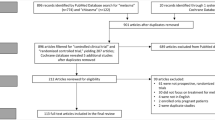Abstract
Bleomycin-induced scleroderma in mice is an established model for human scleroderma. Making use of this, we have established a new model for wound retardation. After inducing dermal sclerosis by local bleomycin treatment in nude mice, a full-thickness wound was made by punch excision on the bleomycin application site. Mice pretreated with bleomycin showed a significant delay in wound closure, as compared with mice pretreated with phosphate-buffered saline. Proliferation of keratinocytes was significantly inhibited and the number of Ki-67-positive keratinocytes was significantly lower in the bleomycin-pretreated skin. Also, the number of CD31-positive blood vessels was markedly reduced in the bleomycin-treated skin. The topical daily application of basic fibroblast growth factor (bFGF) significantly promoted wound closure, while increasing blood vessel formation and reducing transforming growth factor-β and alpha-smooth muscle actin mRNA levels. Furthermore, only two applications of PG-FGF1, a fusion protein of FGF1 with heparan sulfate proteoglycan, overcame the delay in wound closure. Wound delay in this model mainly occurred as a result of decreased vessel formation and keratinocyte migration following bleomycin treatment. It is expected that this model will provide novel insights into the pathogenesis of wound healing and the exploration of possible candidate drugs for refractory or chronic wounds in the clinical setting.








Similar content being viewed by others
References
Abe M, Yokoyama Y, Ishikawa O (2012) A possible mechanism of basic fibroblast growth factor-promoted scarless wound healing: the induction of myofibroblast apoptosis. Eur J Dermatol 22:46–53
Bland KI, Palin WE, von Fraunhofer JA et al (1984) Experimental and clinical observations of the effects of cytotoxic chemotherapeutic drugs on wound healing. Ann Surg 199:782–790
Greaves NS, Ashcroft KJ, Baguneid M, Bayat A (2013) Current understanding of molecular and cellular mechanisms in fibroplasia and angiogenesis during acute wound healing. J Dermatol Sci 72:206–217
Howdieshell TR, Callaway D, Webb WL et al (2001) Antibody neutralization of vascular endothelial growth factor inhibits wound granulation tissue formation. J Surg Res 96:173–182
Lakos G, Takagawa S, Chen SJ et al (2004) Targeted distruption of TGF-beta/Smad3 signaling modulates skin fibrosis in a mouse model of scleroderma. Am J Pathol 165:203–217
Michaels J, Churgin SS, Blechman KM et al (2007) db/db mice exhibit severe wound-healing impairments compared with other murine diabetic strains in a silicone-splinted excisional wound model. Wound Rep Regener 15:665–670
Schremi S, Szeimies R-M, Prantl L, Landthaler M, Babilas P (2010) Wound healing in the 21st century. J Am Acad Dermatol 63:866–881
Wicke C, Halliday B, Allen D et al (2000) Effects of steroids and retinoids on wound healing. Arch Surg 135:1265–1270
Yamamoto T, Takagawa S, Katayama I et al (1999) Animal model of sclerotic skin. I: local injection of bleomycin induce sclerotic skin mimicking scleroderma. J Invest Dermatol 112:456–462
Yamamoto T, Takagawa S, Katayama I, Nishioka K (1999) Anti-sclerotic effect of anti-transforming growth factor-β antibody in bleomycin-induced scleroderma. Clin Immunol 92:6–13
Yamamoto T, Takagawa S, Mizushima Y, Nishioka K (1999) Effect of superoxide dismutase on bleomycin-induced dermal sclerosis: implications for the treatment of systemic sclerosis. J Invest Dermatol 113:843–847
Yamamoto T, Nishioka K (2004) Animal model of sclerotic skin. VI: evaluation of bleomycin-induced skin sclerosis in nude mice. Arch Dermatol Res 295:453–456
Yamamoto T (2006) The bleomycin-induced scleroderma model: what have we learned for scleroderma pathogenesis? Arch Dermatol Res 297:333–344
Yamamoto T (2006) Bleomycin and the skin. Br J Dermatol 155:869–875
Yeh JT, Yeh LK, Jung SM et al (2010) Impaired skin wound healing in lumican-nullmice. Br J Dermatol 163:1174–1180
Yoneda A, Asada M, Oda Y, Suzuki M, Imamura T (2000) Engineering of an FGF-proteoglycan fusion protein with heparin-independent, mitogenic activity. Nat Biotechnol 18:641–644
Yoshida S, Yamaguchi Y, Itami S et al (2003) Neutralization of hepatocyte growth factor leads to retarded cutaneous wound healing associated with decreased neovascularization and granulation tissue formation. J Invest Dermatol 120:335–343
Acknowledgments
We thank Ms. Ikuyo Yoshino and Ms. Akiko Kuroiwa for their technical assistance. This research was partially supported by a Grant-in-Aid for Scientific Research (C) (No. 20591355) from the Japan Society for the Promotion of Science to RT.
Author information
Authors and Affiliations
Corresponding author
Ethics declarations
Conflict of interest
None declared.
Additional information
T. Maeda and T. Yamamoto equally contributed to this work.
Rights and permissions
About this article
Cite this article
Maeda, T., Yamamoto, T., Imamura, T. et al. Impaired wound healing in bleomycin-induced murine scleroderma: a new model of wound retardation. Arch Dermatol Res 308, 87–94 (2016). https://doi.org/10.1007/s00403-015-1614-7
Received:
Revised:
Accepted:
Published:
Issue Date:
DOI: https://doi.org/10.1007/s00403-015-1614-7




